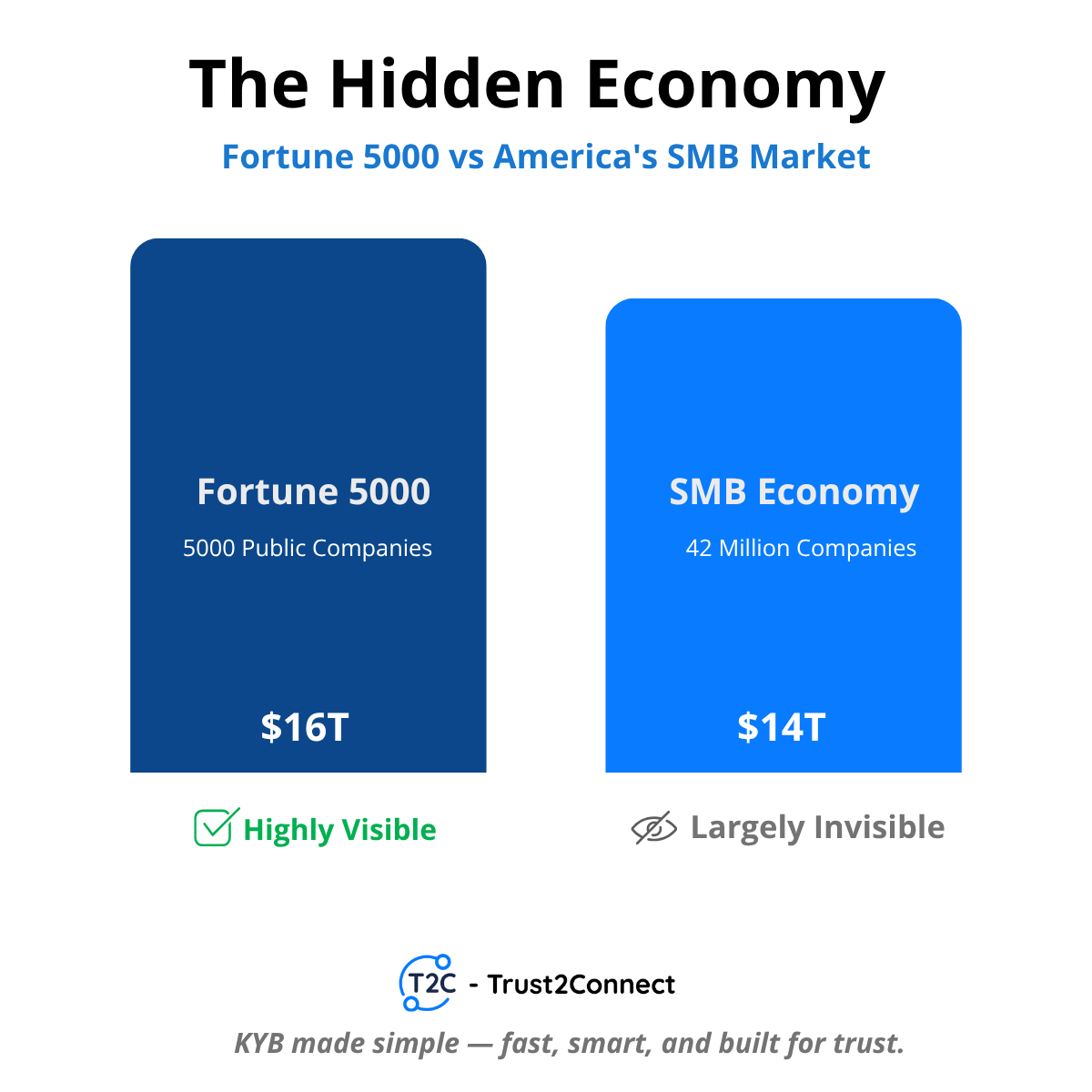Think of Earth's ecosystems. They're powered by countless micro-organisms we can't see—yet this invisible biology makes everything else possible. The U.S. economy works the same way. It's dominated by 42 million private companies that form the foundation of growth, yet remain largely mysterious and poorly understood.
The Hidden Economy
Unlike the Fortune 1000 public companies (concentrated in Financial Services, Energy, and Automotive), private companies are incredibly diverse. They span everything from metal shops to medical practices to restaurants, creating what amounts to the world's third largest economy operating largely in the shadows.

For equipment finance lessors, this creates a serious challenge.
The Problem: Companies That Won't Sit Still
Understanding the private companies you're lending to has always been difficult. Now it's getting harder because these businesses are churning faster than ever.
What we're finding at Trust2Connect as we analyze our database of 42 million U.S. businesses: A majority of private companies won't make it to 2030. That's not hyperbole—it's data.
The survival rates tell the story. Farms have the highest survivor rate at 65%, meaning 35% will disappear within five years. Mining has the worst rate, with 75% of companies gone within ten years. This churn has actually accelerated over the past 20 years, mirroring what we've seen in public markets where S&P 500 companies now last 18 years versus 33 years in 1965.
Why This Matters for Your Credit Decisions
Business identity drives 30%-50% of credit prediction accuracy. Get the profile wrong, and your risk assessment falls apart.
The credit application is your starting point, but it's based on trust. We consistently hear from our customers that their customers provide incorrect and inconsistent information on their applications. Business owners may not know their exact legal status. They might exaggerate firmographics to get better terms. The authorized signer might not even be legitimate. As Reagan said: "Trust, but verify."
The complexity is staggering. Secretary of State offices across 50 states use 394 different codes to indicate business standing. Companies exit through dissolution, forfeiture, loss of good standing—all tracked differently depending on location.
The Silver Lining
Here's the paradox: This high turnover actually signals something positive. American business dynamism is alive and well.
New companies replace old ones, bringing better processes, cheaper products, and faster service delivery. The churn you're seeing isn't decay—it's creative destruction in action. The private company ecosystem has become more competitive and innovative over the past decade.
What This Means for Lessors
The opaqueness and churn create real costs for B2B transactions. Investing in new customer relationships is expensive. Discovering your partner won't exist in two years is even more expensive.
The solution isn't to avoid the risk—it's to verify better and factor turnover into your planning. Checking business standing upfront and understanding survival rates by industry can save significant costs from business disruption down the road.
Bottom line: Carefully consider your partners and continuously find ways to lower the costs of investing in new relationships. In a churning economy, verification isn't optional—it's foundational.